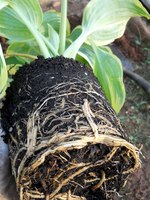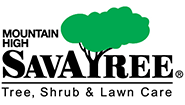Understanding what to look for when selecting plant material can make the difference between a healthy tree or shrub and one that will struggle or die. Typically the smaller the plant, the less you have to look for. When it comes to smaller one or two gallon plants, you should be looking for firm, consistently colored foliage that is fully intact. Wilted or discolored leaves could indicate over watering or other more serious issues. Look at the underside of the leaves to see if there are any unwanted insects or diseases associated with the plant. Always make sure that the soil has a good moisture level.

When you are looking at larger shrubs (typically woody plant material) you will follow the same guidelines as the small perennials, but you will also have to look for damage to the bark on the trunk or stem, as well as any limb damage. Take notice of multi-stemmed plants where the stems meet the soil so that none of them have cracked or separated
from the other stems if attached. Ensure that there are minimal roots exposed at the base of the container. A large amount of roots coming out of the drain holes in the bottom of the container could indicate that the plant has been in the container for more than one season and is likely root bound.
 With larger trees and shrubs you will follow the same procedure as the smaller plants and shrubs, but you will also want to make sure that there is no damage to the trunk of the tree. The bark on a young tree is very soft and if damaged could lead to insect infestation or rot as the tree matures; creating an unsafe mature tree or at the very least can shorten the life expectancy of the tree. You will also want to look at where the trunk meets the soil and make sure that the twine that holds the burlap in place has not been on so long or so tight that there is swelling. With a deciduous tree, not only is the inspection of all of the physical aspects important, you will also want to make sure that the tree has a uniform shape and a strong central stem. Some small broken branches that can be easily trimmed back should not be alarming, however, if a larger branch breaks back to the point of attachment and the bark
With larger trees and shrubs you will follow the same procedure as the smaller plants and shrubs, but you will also want to make sure that there is no damage to the trunk of the tree. The bark on a young tree is very soft and if damaged could lead to insect infestation or rot as the tree matures; creating an unsafe mature tree or at the very least can shorten the life expectancy of the tree. You will also want to look at where the trunk meets the soil and make sure that the twine that holds the burlap in place has not been on so long or so tight that there is swelling. With a deciduous tree, not only is the inspection of all of the physical aspects important, you will also want to make sure that the tree has a uniform shape and a strong central stem. Some small broken branches that can be easily trimmed back should not be alarming, however, if a larger branch breaks back to the point of attachment and the bark  is ripped, that would not be a good candidate. With balled and burlapped trees you may see some roots that will extend past the burlap. As long as it is not excessive this should not be an issue, you would need to trim the roots back to the ball prior to planting. When you are dealing with balled and burlapped trees you will want to take notice of the ball shape, whether the ball is overly wet or dry and if the stem separates from the ball when gently rocked. The ball should be mostly round without any sides that have been crushed or damaged. You want to make sure that the trunk is near the center of the ball and is vertical when the ball is level. If the trunk has any separation from the ball (you can see a gap at the ball) there could have been some damage done to the ball or the root system and this would not be a good choice.
is ripped, that would not be a good candidate. With balled and burlapped trees you may see some roots that will extend past the burlap. As long as it is not excessive this should not be an issue, you would need to trim the roots back to the ball prior to planting. When you are dealing with balled and burlapped trees you will want to take notice of the ball shape, whether the ball is overly wet or dry and if the stem separates from the ball when gently rocked. The ball should be mostly round without any sides that have been crushed or damaged. You want to make sure that the trunk is near the center of the ball and is vertical when the ball is level. If the trunk has any separation from the ball (you can see a gap at the ball) there could have been some damage done to the ball or the root system and this would not be a good choice.
Over all most plants and trees will survive some damage and even being mishandled and will still grow to their full potential. Following these guidelines will help minimize the mortality rate in your landscape project and will also ensure happy, healthy plants.
